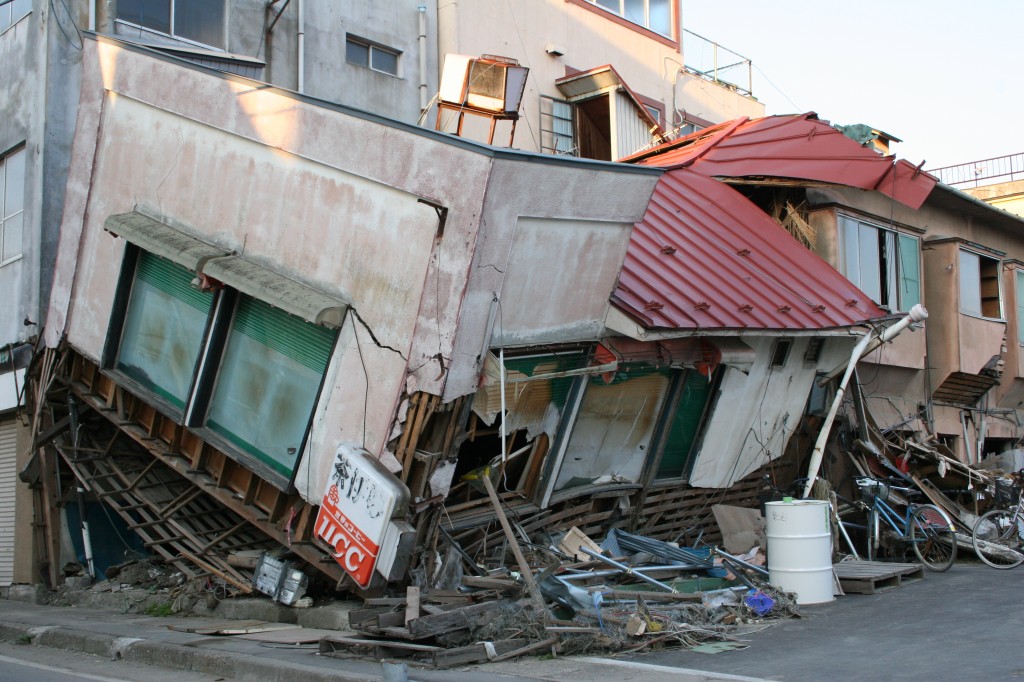While many here in Japan have become used to the frequent aftershocks—over 1,000 recorded since the 9.0-magnitude earthquake—today’s earthquake was more than just a tremor. The largest aftershock since March 11, this one violently jolted northeast Japan and Tokyo, and shook buildings as far away as Osaka in western Japan. In a chilling déjà vu sequence, tsunami warnings were issued, people told to run to higher ground, and power was cut in areas near the epicenter, this time close to midnight in Japan.
Japan, a nation that is still reeling from the twin disasters of March 11 and the fear of increased nuclear radiation levels, has been reluctant to let its guard down. Ongoing seismic activity coupled with frightening tsunami and radiation warnings have taken a psychological toll on the Japanese public, especially since many have no idea when they can resume their normal lives. It’s this feeling of uncertainty that many Japanese speak about on a daily basis.
Just today, I met two soft-spoken, friendly women who fled the northeast disaster zone in the days after the March 11 earthquake and tsunami. This afternoon, they strolled through a quiet street in Kyoto, 500 miles away from their hometown of Sendai, which was completely devastated last month. As they admired the cherry blossoms that have started to bloom all over Kyoto, they talked with uncertainty about their plans to return home. They mentioned going back to the northeast coast in a few days, and like so many hospitable Japanese, invited me to stay at their homes with their families. However, this new strong quake renewed distress levels, and I’m not sure when they will feel safe going back to Sendai.
In this society, where it’s rare to be fearful of anything, people are now scared of what could happen next.
A country that is known for being one of the safest in the world is now in a state of prolonged fear for the first time since the bombings of World War II. A number of earthquakes have hit Japan in recent memory, including the 1995 Great Hanshin earthquake that killed over 6,000 people in Kobe. However, these quakes affected a very limited geographic area, unlike the March disaster, which struck towns along a few hundred miles of coastline and even brought Tokyo to a standstill.
When I first lived in Japan in 2003, I experienced for the first time the deep calm that comes with living in a society with little crime or violence. I still remember seeing people leave the keys in the ignition of their unlocked, brand new Mercedes Benz cars as they shopped inside a convenience store. I felt completely safe biking home through remote rice paddies or sitting in a train alone in the middle of the night. In this society, where it’s rare to be fearful of anything, people are now scared of what could happen next.
This fear has caused a sense of depression among many Japanese, who are unsure of how long the recovery process will take. Even here in Osaka, located hundreds of miles from the earthquake zone, people have cut back on consumption, causing some leaders, including Osaka’s Governor Toru Hashimoto to urge people to spend more to boost the economy.
Osaka’s usually brightly lit landmarks, including Osaka Castle and the famous, large neon signs in the city’s Dotonbori district (the Times Square of Osaka), went dark after the earthquake. Though Osaka did not experience electricity shortages, the city decided to darken some of its well-known illuminations in solidarity with earthquake and tsunami survivors. The dimming of lights across Osaka, one of Japan’s largest cities, is a reflection of a grieving nation.
Many here feel they cannot act as they normally would, since it would appear unseemly. Just a few days ago, I spoke to several Osaka residents in one of the city’s shopping districts. They told me they were voluntarily restraining themselves from spending money and using electricity in an effort to be mindful of those who are suffering in the tsunami-ravaged northeast. This practice of self-restraint, called jishuku in Japanese, has become quite commonplace here in recent days.
The uncertainty of not knowing when it’s safe to return home has also affected Tokyoites, particularly families with young children who fear exposure to radiation. I recently talked to a mother of a 3-month-old baby about her decision to leave Tokyo with a group of other young mothers and pregnant friends. She was very emotional about leaving her home in this time of crisis, but worried about reports of higher than usual levels of radiation around Tokyo. It’s the first time she’s ever had to worry about her child’s safety, and she doesn’t know how long she’ll have to stay here in Osaka, away from her own home.
Along Japan’s affected coastal areas, rescue teams, volunteers, military forces and residents have been clearing out massive amounts of debris. Volunteer groups on the ground are making good progress everyday. But today’s aftershock serves as a shocking reminder of the incredibly difficult nature of the recovery process for Japan.
Read the story on Daily Beast











